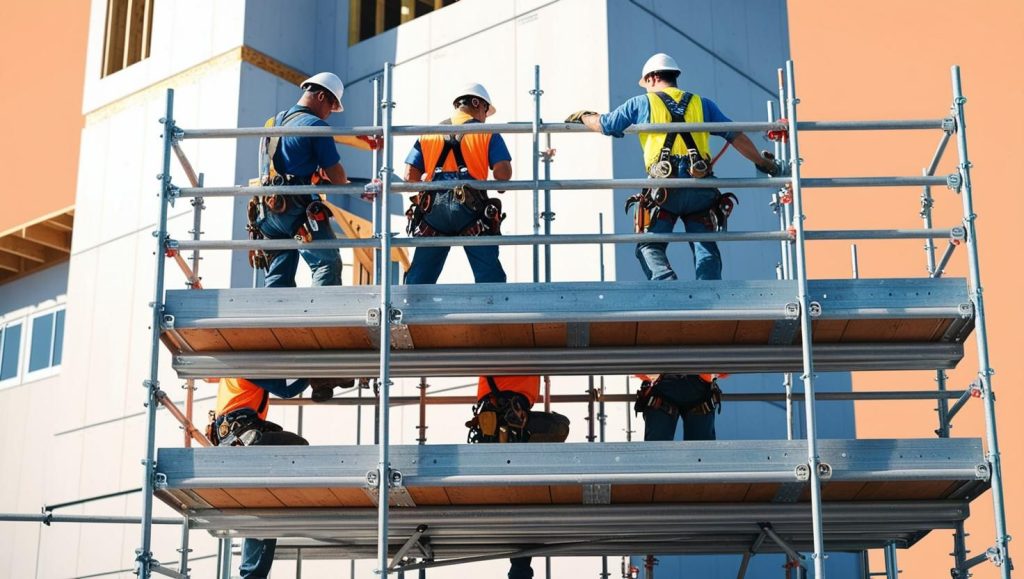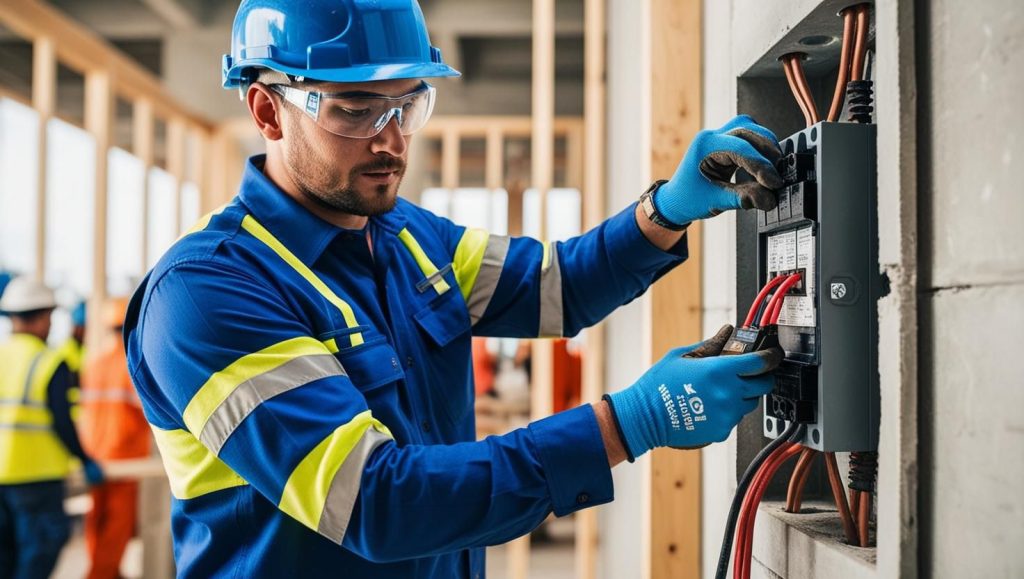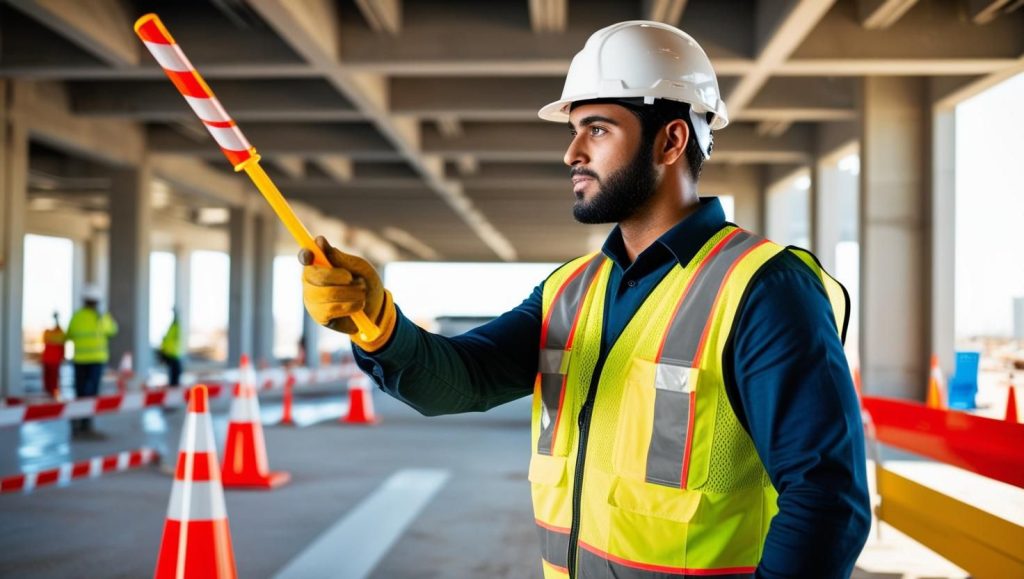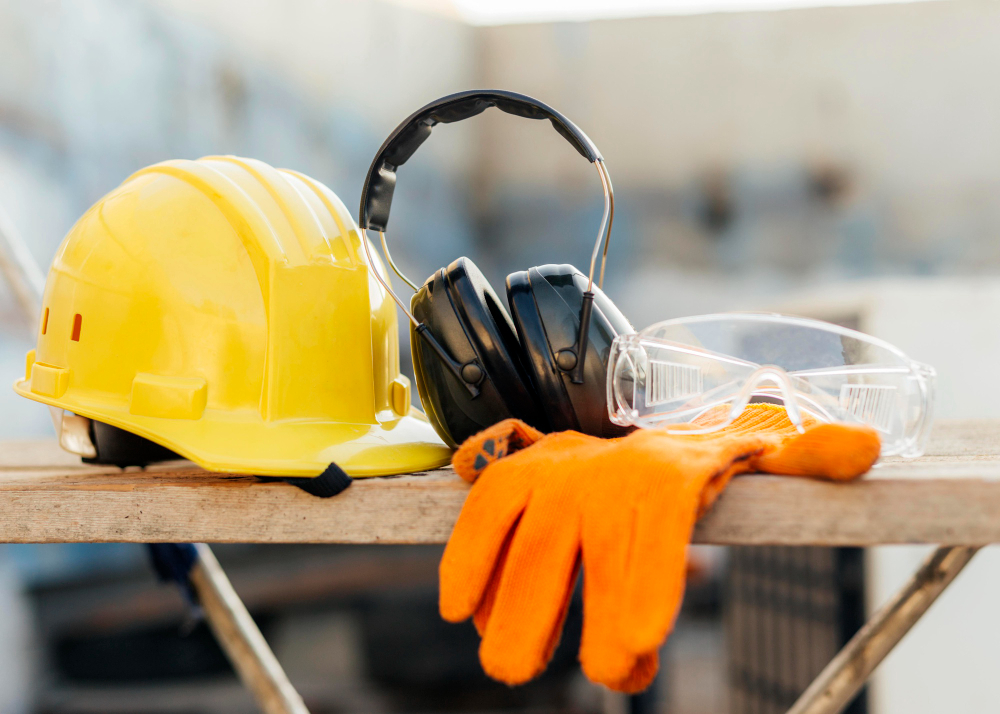Manual Handling Course
Incorrect manual handling is one of the most common causes of workplace injury! Our Manual Handling course design covers the basic.

Incorrect manual handling is one of the most common causes of workplace injury! Our Manual Handling course design covers the basic.


Scaffolds are most commonly used to provide temporary access to elevated work areas. The risks associated with the erection, use and dismantling of scaffolding are significant.
By prioritizing scaffold safety, construction sites can protect workers’ lives, minimize downtime, and avoid costly legal consequences.
Electrical safety is critical in construction because electrical hazards, such as electrocution, electric shocks, and fires, pose serious risks to workers. Construction sites often have exposed wires, temporary electrical setups, and high-power equipment, making them prone to electrical accidents. These hazards can lead to severe injuries, fatalities, and property damage. Proper electrical safety practices, including regular inspections, grounding, and the use of personal protective equipment (PPE), help prevent these incidents, ensuring a safer work environment and compliance with safety regulations


Excavation safety is vital in construction because excavation work presents numerous hazards, including cave-ins, falls, hazardous atmospheres, and contact with underground utilities.
Cave-ins are particularly deadly, often leading to serious injuries or fatalities. Proper excavation safety practices, such as trench shoring, sloping, and shielding, can prevent these accidents by ensuring the structural stability of the excavation site. Additionally, identifying and marking utility lines before digging helps prevent accidental contact with electrical, gas, or water lines, reducing the risk of explosions or other dangerous incidents.
Prioritizing excavation safety safeguards workers’ lives and ensures project continuity by preventing costly delays.
Whether you’re ready to get started or just exploring your options, our team is here to answer your questions.
Hot work safety is crucial in construction because tasks like welding, cutting, and grinding involve open flames or sparks that can ignite flammable materials, leading to fires or explosions.
Construction sites often contain combustible materials such as wood, insulation, and chemicals, making them especially vulnerable to fire hazards. Implementing proper safety measures, such as hot work permits, fire watches, and ensuring the removal or protection of flammable materials, helps mitigate these risks.
Hot work safety also protects workers from burns, toxic fumes, and eye injuries, ensuring a safer work environment and compliance with fire safety regulations


Hazard identification is essential in construction because it helps prevent accidents, injuries, and fatalities by proactively recognizing potential dangers on a job site. Construction environments are dynamic and often involve heavy machinery, hazardous materials, elevated work areas, and electrical risks.
By identifying hazards early, safety measures can be implemented to control or eliminate risks, ensuring that workers are protected. Effective hazard identification also helps in complying with legal safety standards, reducing the likelihood of costly incidents, project delays, and legal penalties. Ultimately, it fosters a culture of safety, ensuring a healthier and more productive workforce
Flagman safety is crucial in construction because flaggers play a vital role in controlling traffic around active work zones, protecting both workers and the public. They ensure that vehicles navigate safely around construction sites, reducing the risk of accidents caused by confusion or miscommunication. Proper flagging procedures prevent collisions with construction equipment, workers, and other vehicles, especially in areas with heavy machinery or reduced visibility. By following safety protocols, flaggers help maintain a controlled and predictable flow of traffic, minimizing the chances of injuries, fatalities, or damage to property. This safety measure is especially important in high-risk areas, such as highway construction zones.


Confined space safety is critical in construction because these spaces, such as tunnels, tanks, and crawl spaces, often have limited entry and exit points, poor ventilation, and can contain hazardous substances or atmospheres. Workers in confined spaces face risks like toxic fumes, oxygen deficiency, entrapment, and fire, making these environments extremely dangerous if proper precautions aren’t taken. Confined space safety protocols, including air monitoring, proper ventilation, and rescue preparedness, help prevent accidents and fatalities by ensuring the space is safe to enter and that emergency measures are in place. This not only protects workers’ lives but also ensures compliance with safety regulations and minimizes liability for construction companies
Whether you’re ready to get started or just exploring your options, our team is here to answer your questions.
Ensuring equipment hazards and operators’ safety is crucial in any operational setting to prevent accidents, injuries, and fatalities. Properly identifying and managing equipment hazards—such as mechanical malfunctions, electrical failures, or ergonomic risks—helps create a safer work environment.
Effective safety protocols, including regular maintenance, operator training, and the use of personal protective equipment (PPE), are essential for mitigating risks. When operators are well-trained and aware of potential hazards, they can take proactive measures to avoid unsafe practices, thereby reducing the likelihood of incidents and enhancing overall productivity.
Prioritizing safety not only protects individuals but also promotes a culture of responsibility and care within the workplace, ultimately leading to more efficient and sustainable operations.


Fire Safety Awareness (RQF) is a regulated and nationally recognized qualification designed for those who want to increase their awareness of fire safety in the workplace.
Candidates will learn basic fire safety principles in order to ensure they are keeping themselves and others in the workplace safe at all times. They will also learn what to do in the event of an emergency and the simple measures that can be taken to control the risk of fires.
With subjects covered in just half a day, this course is an ideal way to ensure that all employees have a good understanding of fire safety, whilst minimising disruption to your organisation’s day to day activity.
Did you know that breaches of fire safety laws can result in unlimited fines and imprisonment?
Fire Safety is a regulated and nationally recognised qualification that has been specifically designed for anyone who has a specific responsibility for fire safety in the workplace, such as designated fire wardens/fire marshals. Successful candidates will gain an understanding of fire safety management at work and the specific roles and responsibilities related to fire safety in the workplace.


The Saudi HSFA CPR AED Provider Course is intended to all healthcare professionals and community members. It teaches and trains the participants how to recognize and treat a variety of emergencies such as fractures, wounds, External /Internal Bleeding, burns, scrapes, sudden illnesses, head, neck, back injuries, heat and cold emergencies.
in addition to that; the participants will gain the necessary knowledge and skills to deal with respiratory or cardiac arrest cases and use Automated External defibrillators safely.
Safe driver training is a critical aspect of is vital in construction reducing the risk of traffic-related accidents Whether a construction zone, which often involves complex traffic patterns, heavy machinery, and workers moving in and out of active areas, or driving on the KSA road network, drivers must be prepared for all contingencies. Defensive driving techniques, such as staying alert, anticipating hazards, and maintaining safe distances, help prevent accidents and protect both workers and drivers. Prioritizing defensive driving safety enhances overall road safety, reduces vehicle-related injuries, and ensures smooth operations.


Construction managers’ safety training is vital for ensuring a safe and efficient work environment on construction sites. Such training equips managers with the knowledge and skills to identify potential hazards, implement safety protocols, and enforce regulations that protect workers from accidents and injuries. By understanding and addressing risks related to equipment, materials, and site conditions, construction managers can proactively prevent incidents and ensure compliance with safety standards.
This training also fosters a culture of safety, encouraging workers to adopt best practices and respond effectively in emergencies. Ultimately, well-trained construction managers contribute to a safer workplace, enhance productivity, and reduce the likelihood of costly accidents and legal issues.
Whether you’re ready to get started or just exploring your options, our team is here to answer your questions.
